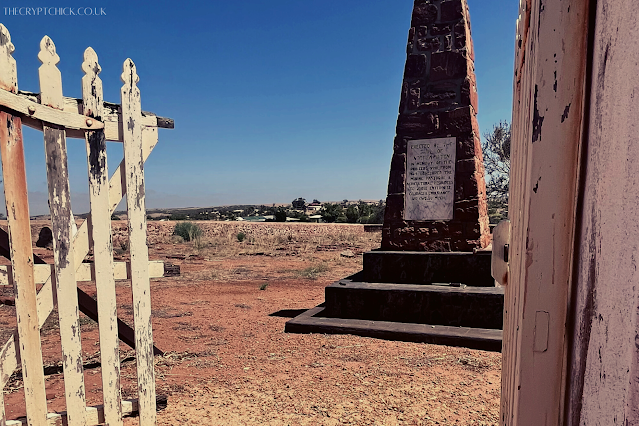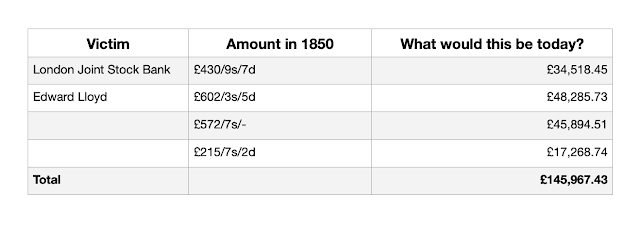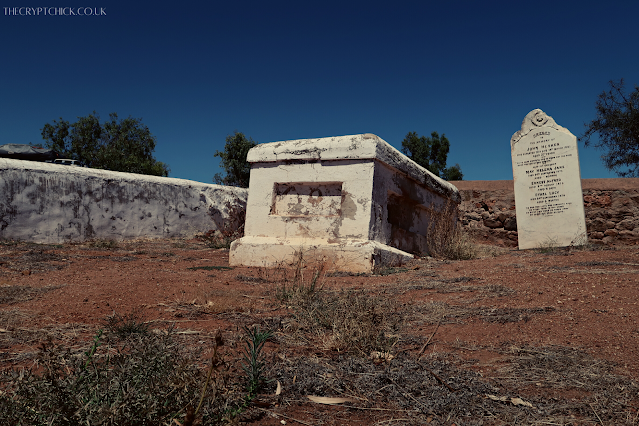The name Gwalla is a title given to the new town of Northampton, and it seems only the residents may know of its history. However, this remote little town holds an interesting history.

A Quick History of Gwalla
Not to be confused with the ghost town of Gwalia, Gwalla, or Northampton, is located North-West of Western Australia, 52km North of Geraldton. When visiting the town, you may see signs diverting you to the location of the old cemetery. This, of course, drew me in. However, why can't you find this place on maps? I haven't quite figured that one out yet - but, I have put a request in!
Gwalla was an old copper mining town that first opened in 1859. In the grand scheme of things, that ain't too long ago. Upon visiting the graveyard, I noticed the large tomb of Joseph Horrocks. He provided the funding for the mine along with George Shenton. The mine provided a large population of workers from Cornwall, England.
In 1864 the nearby Wanerenooka Mine joined together to create the larger residential town of Northampton. Gwalla mine was closed for many years. However, it was opened again in 1907 to provide water for the town, and continued to thrive until the 1980's when it was closed again.
Gwalla Church & Cemetery Ruins
I mentioned earlier that a large tomb rested on the cemetery grounds. Of course, the cemetery was the first place I visited here, and I had no idea who it was at first, as there was no inscription on the tomb! However, upon exiting the graveyard I noticed an information board, so I went to have a look to find out that it was the grave of Joseph Horrocks. Horrocks also built the church in 1864 in an effort to cater for 'all religions'.
Unfortunately, the church closed its doors for the last time in 1917 and sadly fell to ruin soon after.
Further research from a Tripadvisor review tells me that a plaque once stood on the wall of the tomb, in a picture taken in October 2020.
Who was Joseph Horrocks?
Lancashire-bred Joseph Lucas Horrocks was born on November 18th 1803. He was the first son of William Horrocks and Jane Smith. Joseph had 5 sisters and 3 brothers. He was known to be a father of 3 with a wife named Mary, though it seems his family did not join him in Australia.
Working Life
Later in his life, in the 1850's he was listed as a businessman in Manchester, under the name of Horrocks, Schaer and Co. The nature of this business was producing and selling chemical products.
On March 22nd 1851, Horrocks pleaded guilty in a defrauding attempt of £430 9s 7d. This would amount to over £34,518.45 today. In fact, this wasn't the only time Horrocks was caught for forgery. To make it a bit easier, I've made a table below.

During his business-man era, he also went into partnership with a London-based company, Gustav Kober and Co. Unfortunately I couldn't find any information on this.
The Move to Australia
Joseph Horrocks was convicted to 14 years in prison. On October 30th 1851 he boarded a ship called The Marion, with 280 other convicts heading to Western Australia. He arrived on January 30th and somehow convinced people that he was a medical professional. This resulted in him securing a job in the medical field at Fremantle's Prison.
Settling in Gwalla
In 1859 he met with George Shenton Sr to discuss the possibility of building a mining town on 100 acres of land. It was in this discussion that Gwalla was born.
Joseph's last commission was to build a schoolhouse and garden. Construction started in 1863. Sadly, Horrocks wouldn't be around for the completion after he passed away in Wanerenooka on October 7th 1865 at the age of 61. The school was completed in 1866 and the town was later renamed Northampton.








There exists a little coasgal enclave called Horrocks.
ReplyDeleteThank you for pointing that out! I've just had a look at this and it's only 20 minutes away from the cemetery. So, it's very likely that this place is named after Joseph Horrocks.
Delete